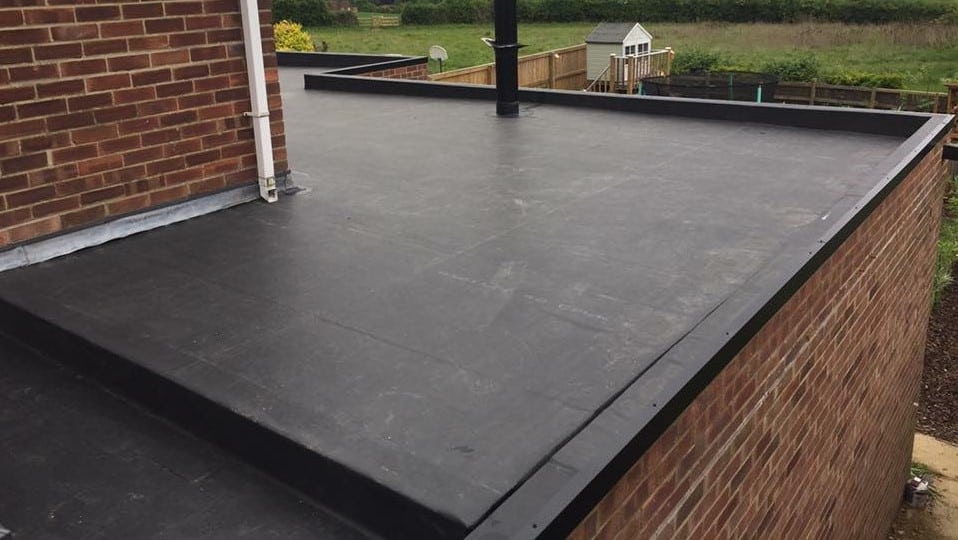Rubber flat roofing, EPDM, which stands for Ethylene Propylene Diene Monomer rubber has grown in popularity and demand both commercially and domestically in the roofing trade and boasts some great traits. Rubber roofing is considered the best long term choice for the environment as it combines durability, weatherproof in nature and low costs versus alternative roof covers.
Rubber roofing
Do you have any questions?
Contact us at Maiva Rooing today to book a free, no obligation roofing consultation.
Contact Us
Rubber Roofing
Benefits of rubber roofs
Provided that the manufacturing process is followed as it should be there are several elements or attributes of rubber roofs that become set in stone which such as:
- Elasticity: the ability of an object or material to resume its normal shape after being stretched or compressed; stretchiness.
- Resistance to ripping: Tear strength is another term used to measure the tear resistance parameters of rubber products. So resistance to ripping is the value of force needed to rip a material and to make the crack continue until it fails.
- Hardness: the quality or condition of being hard.
- Resistance to abrasion and wear: Abrasion resistance refers to the ability of materials and structures to withstand abrasion. It is a method of wearing down or rubbing away by means of friction.
- Energy return: Energy return denotes the amount of energy that rubber is able to retain when force is exerted upon it another force.
- Resistance to breakage. The capacity to withstand breakage, therefore, stopping water from entering the rubber roof and causing leaks to appear on your ceiling.
Origins of rubber roofing
EPDM rubber roofing was first invented 60 years ago, to be used a construction material primarily in the Middle East building trade that due to their super hot climate needed a material that could work well both in hot temperatures but also cold as their temperature goes up and down dramatically at different times of the year. Believe it or not, rubber roofing can cope at temperatures as hot as 120 degrees and as low as minus 45 degrees!
How rubber roofs are made
There are several stages when creating rubber roofs from the raw material itself, formulation, vulcanisation and granulation. This is all too in-depth to really write about on our website! The key things that you need to know when considering rubber roofs are that after vulcanisation the EPDM granules are joined together into huge sheets using hot temperature. This bond is strong which helps create such a robust material, it is also compressed.
Get in touch with Maiva to discuss your rubber roof needs…
